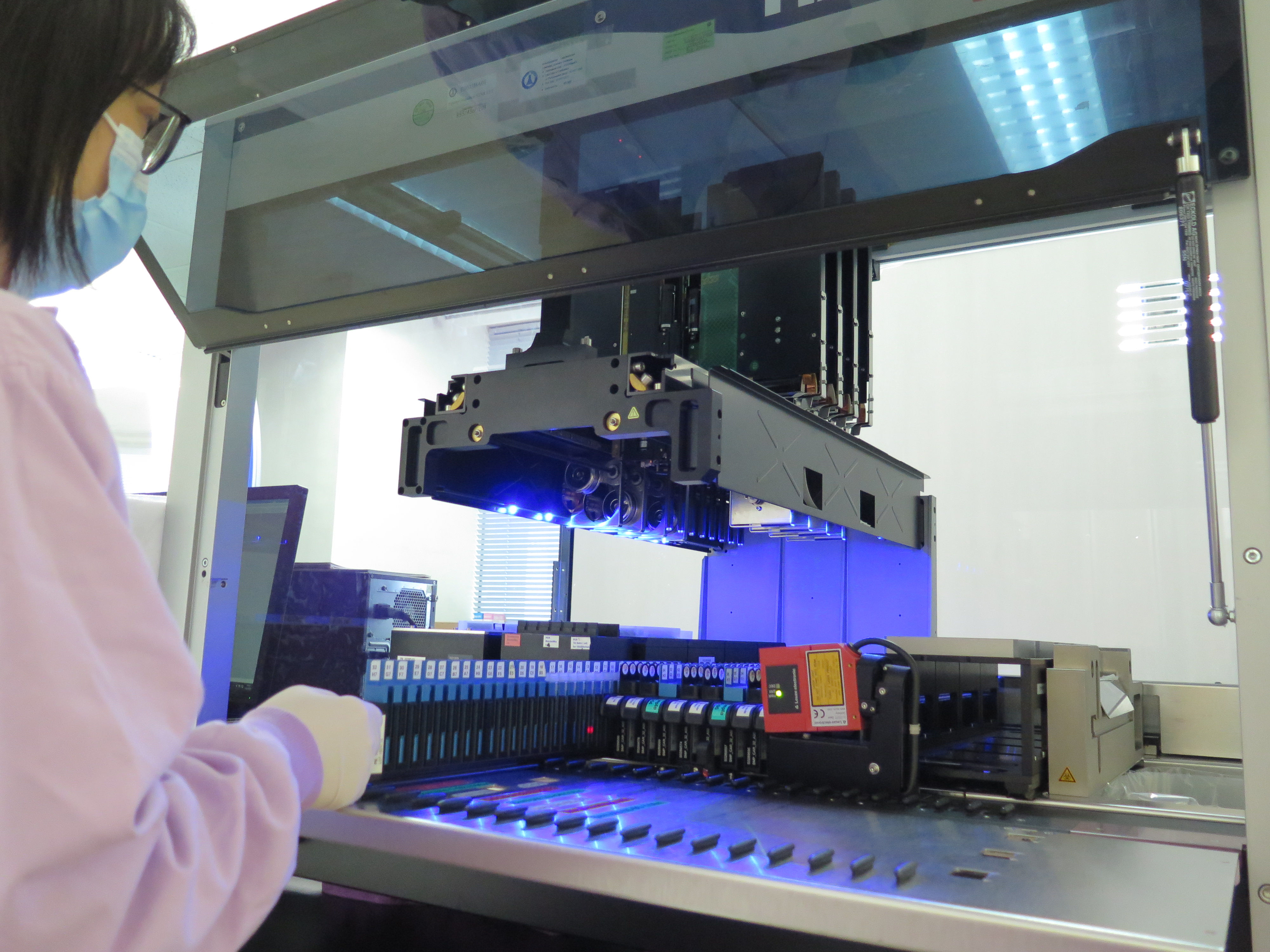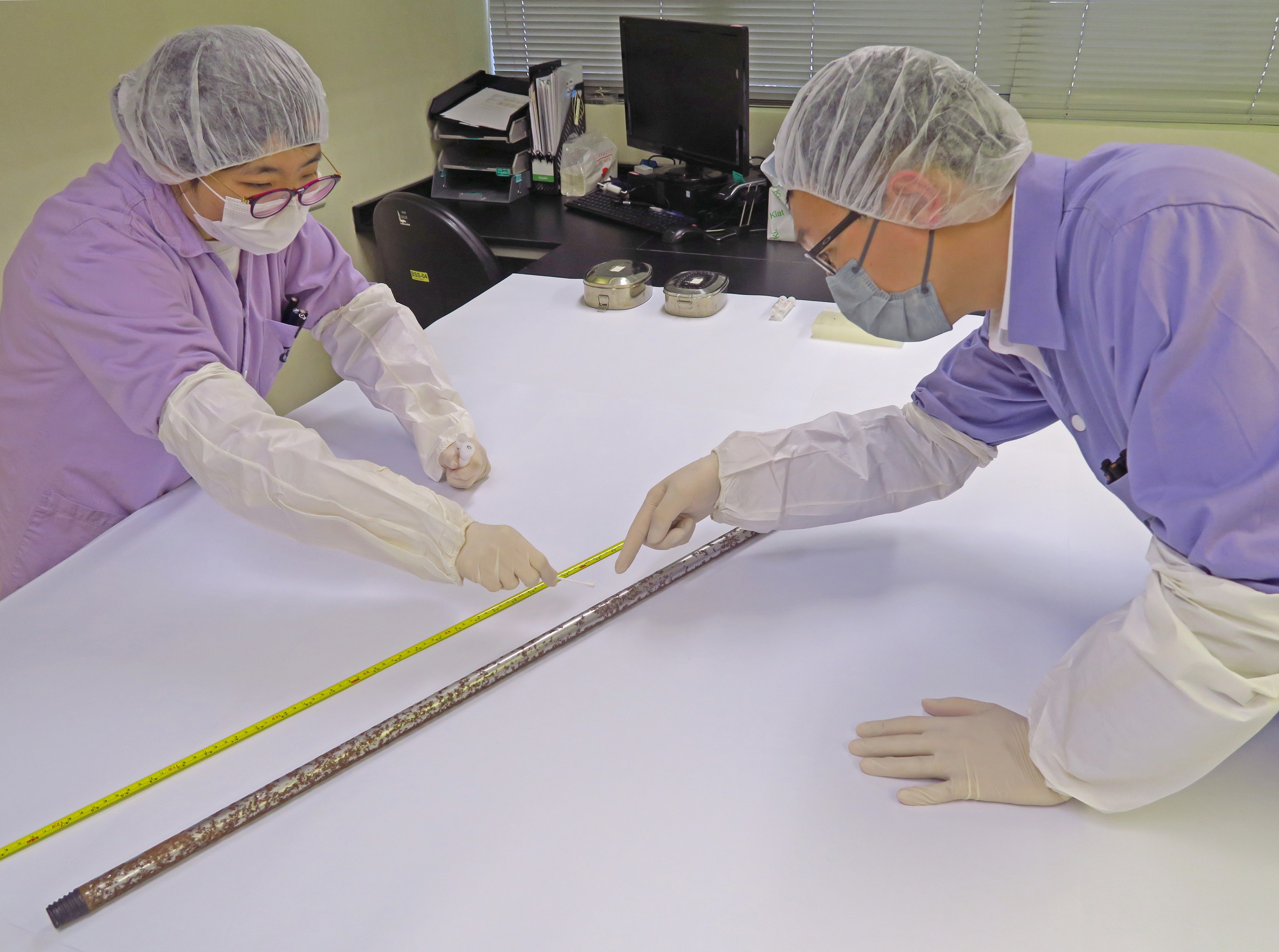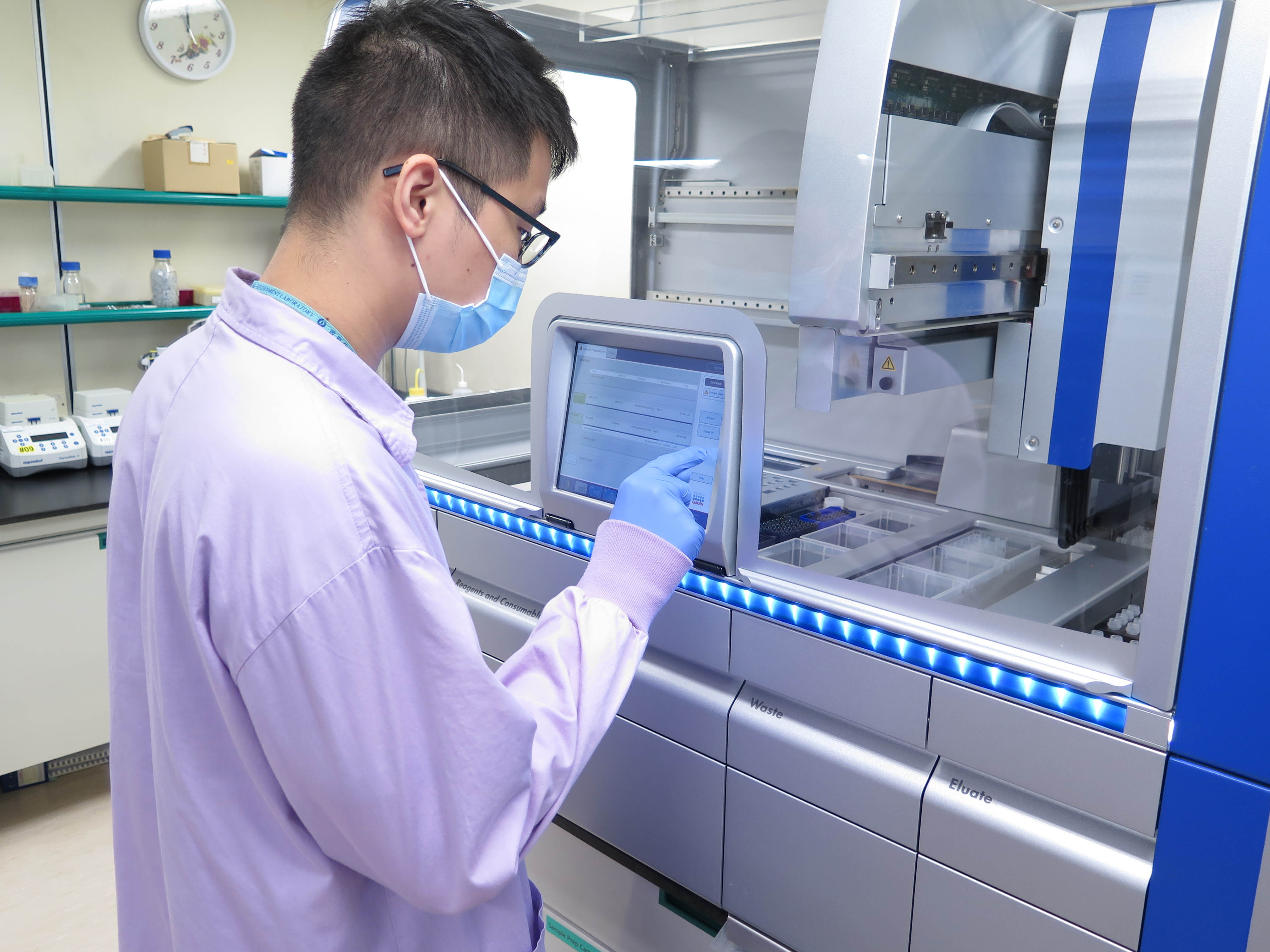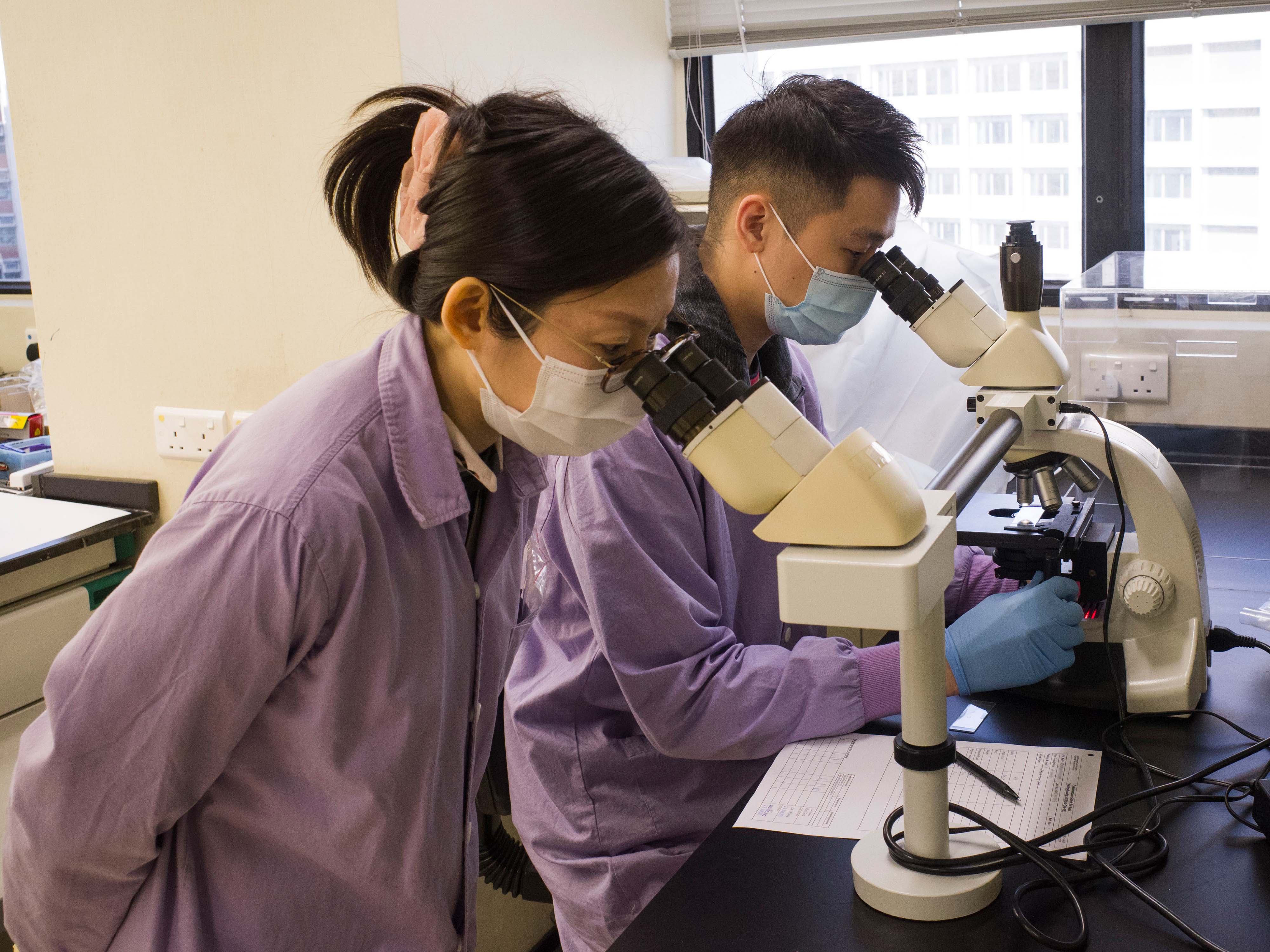Biochemical Sciences Sections
The Biochemical Sciences Sections (BSS) consist of two sections, A and B, working in parallel. The primary role of BSS is to identify and individualise the source of biological evidence collected at the scene of crime using DNA profiling technology. Cases received by the Sections are predominantly related to "criminal offences against person" such as homicide, sexual offences and assaults, and "property crime", such as burglary, theft and criminal damage. In order to assist law enforcement in their investigation and provide professional advice, biological materials on the submitted case exhibits are subjected to testing and comparison in order to ascertain their possible sources, for example, whether blood or semen found is originated from the suspect in a sexual assault case; parentage analysis between alleged parents and infant corpse in an infanticide case; and confirm the identity of individuals from the human remains, such as bone and teeth, in a “Dead Body Found” case.

DNA extraction using a robotic system

Staff searching for DNA on an exhibit item
Apart from assisting in the routinely received serious and high-volume crimes, officers in the Sections are also involved in specialised investigations such as the analysis of bloodstain patterns at crime scenes pertaining to homicide or serious assault cases in an effort to reconstruct the case scenario, the use of DNA analysis to authenticate submitted food products in some deception cases, for example, dried rabbits’ ears being used to disguise as fish maw, and handling cases involving illegal trading or consumption of dog or cat meat.
Since 1998, Polymerase Chain Reaction (PCR)-based DNA profiling has been the principal analytical method for the examination of biological evidence. The DNA profiling kit routinely used in the Sections allows typing of twenty-six DNA characteristics plus sex determination. The Sections have always been striving to enhance the evidential value of biological evidence by maximising DNA recovery, especially from compromised and challenging casework samples, and through exploring and employing various state-of-the-art processes in DNA analyses to increase detection sensitivity, heighten the ability to overcome PCR inhibition, improve data quality and operational efficiency.
Key Instruments
The following instruments are used routinely by the Section:
- Genetic Analyzers
- Automated Liquid Handling Systems
- Sequence Detection Systems
- PCR Thermocyclers

DNA extraction using a robotic system

Examination of sperm under a microscope
Targets and Key Indicators
Key Performance Measures Relating to the Forensic Science Services
Targets
Targets are defined as the percentage of completed cases whose individual case-completion time does not exceed a specified number of working day(s)
